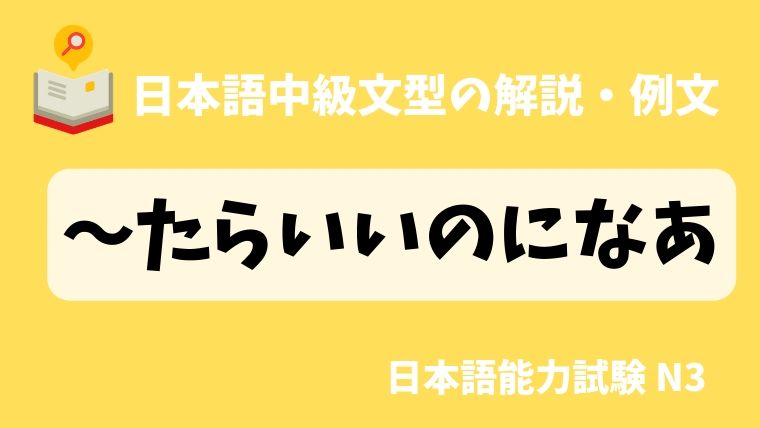(2025/12/18 11:00:41時点 Amazon調べ-詳細)
解説:〜たらいいのになあ
●意味
話し手の願望を表す。
Expresses the speaker’s wishes or desires.
●接続
V(タ形) + らいいのになあ
イAかったら + いいのになあ
ナAだったら + いいのになあ
Nだったら + いいのになあ
●日本語能力試験(JLPT)のレベル
N3
●備考
①「なあ」を省略して「〜たらいいのに」と言ったり、「のに」を省略して「〜たらいいなあ」と言うこともできる。
It is also possible to omit ‘なあ’ and say ‘〜たらいいのに,’ or omit ‘のに’ and say ‘〜たらいいなあ.’
②意志動詞は使えない。そのため動詞の場合、可能形の形と接続することが多い。
Volitional verbs cannot be used. Therefore, when using verbs, it is often combined with the potential form.
③他の条件文「〜と」や「〜ば」で置き換えることもできる。
It can also be replaced with other conditional forms such as ‘〜と’ or ‘〜ば.’
例文
明日の試験、合格できるといいなあ。
I hope I can pass the exam tomorrow.
明日の試験、簡単だったらいいのになあ。
I hope the exam tomorrow will be easy.
給料があと、3万円高かったらいいのになあ。
I wish my salary were 30,000 yen higher.
クリスマスまでに彼女ができるといいのになあ。
I hope I find a girlfriend by Christmas.
もっと、単語や漢字が簡単に覚えられたらいいのになあ。
I wish I could remember words and kanji more easily.
明日は僕の嫌いな運動会かあ。雨だったらいいのになあ。
Tomorrow is the sports festival I dislike. I wish it would rain.
このマンションは家賃が安いのはいいけど、周辺が工事でうるさいんだよな。もう少し静かだったらいいのになあ。
It’s good that the rent for this apartment is cheap, but the surrounding area is noisy due to construction. I wish it were a bit quieter.



